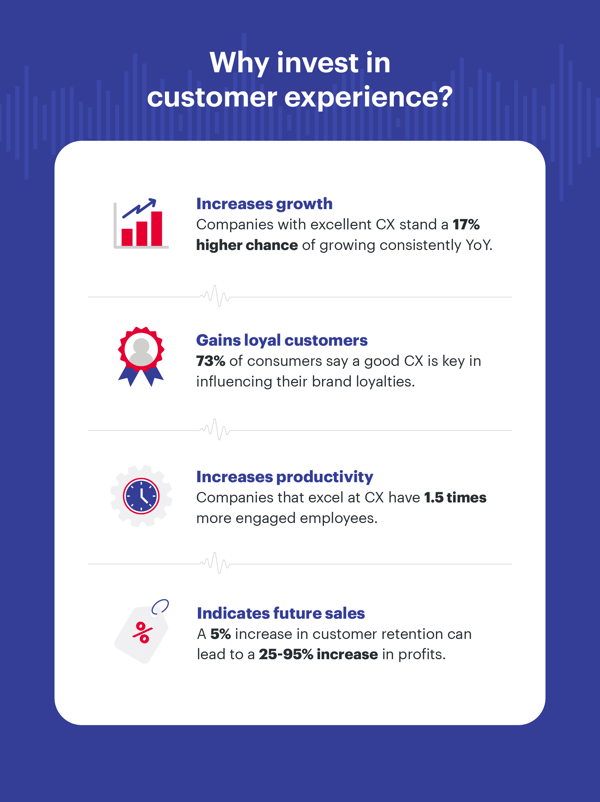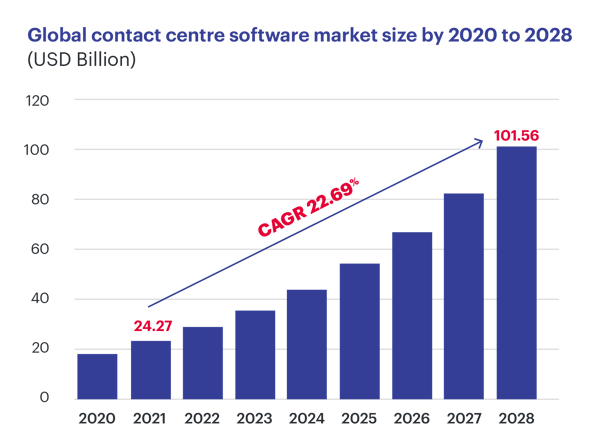If there has been one constant for the customer experience (CX) sector during 2023, it has been change. Amid a whirlwind of new technologies, renewed budget pressures, increased customer expectations and challenging labour shortages, the bright first days of January seem a long time ago and one could be forgiven for feeling overwhelmed by the rapid pace of evolution in an industry already known for not standing still.
For that reason, it often pays to take a moment to pause and reflect on recent events and consider what they might mean for the future. On the back of the COVID-19 pandemic, more organisations are placing increased emphasis on the importance of CX and the scope of consumer demands has never been greater.
To meet such demands, it is essential that executives and other business leaders are across the latest developments, this guide will aim to provide them with insights into the key talking points and trends to watch in coming months.

Source: Introduction to Customer Journey Mapping Services in 2023 | UpTop (uptopcorp.com)
-
The ChatGPT rethink:
it started with a rumble in late 2022 before exploding into the public consciousness in the early months of this year. ChatGPT – OpenAI’s hugely popular generative AI tool which racked up 100 million monthly active users within two months of its launch1 and had businesses across the globe asking how it could benefit their customers.
As the months have ticked by though, concerns about hallucinations and lack of control have inspired many CX providers to instead look towards safer options such as supervised learning, which has the presence of a supervisor that essentially trains the machine using data that is well-labelled or already tagged with the correct answer. This includes the likes of Oration by Convai, a cloud-based call routing plug-in that enables business users to build, manage and advance their telephone contact customer experience. -
Cost control measures:
with many economists and investors concerned that a US recession remains inevitable in 20232, businesses are being urged to ensure they have mechanisms in place to boost their resilience in difficult times. This extends to contact centres, which learned during the pandemic that call volumes and customer support requests soar in uncertain times (one study found contact centres recorded a 300% increase in calls during the early stages of COVID-193) and managing the influx can be a nightmare when one’s own budgets are under pressure.
Now is the time to invest in tech ‘safety nets’ that deliver superior customer experience while lightening the load on teams that may be impacted by agent cutbacks. The likes of intelligent call routing and voice verification are just two of the ground-breaking technologies that are playing such a role. -
Enhanced personalisation:
studies show that 71% of consumers already expect personalised service when engaging with a business4 but as the year progresses, the pressure is on to take such efforts to the next level. This is particularly so when customers move from one mode of support to another – for example, making a purchase from a physical store and later calling a contact centre when they need assistance with their product.
People cannot be seen as one customer when they are shopping and another when they need help so the onus is on businesses to bridge the gap. Using a connective tool that can share information between experiences is one way to help contextualise a customer’s experience, not only strengthening their CX but maximising efficiency.
-
Rise of virtual assistants:
it may have been a while since you heard the term ‘Great Resignation’ but the effects of the pandemic-inspired phenomenon continue to linger. Research shows more than 50% of CX professionals believe staff shortages are their greatest challenge5 and that lack of key personnel where they need them most is a fast track to leaving customers underwhelmed at best and walking away in anger at worst.
Tapping into the expertise of virtual assistants is a cost-effective and highly efficient way to tackle such shortages, particularly in the customer service field where they pick up where chatbots and self-service options leave off. Quality customer experience is ultimately about having enough staff where they are needed and virtual assistants can help fill that breach when traditional recruitment is facing challenges. -
Data security priorities:
the push towards greater protection of customer data has been growing for several years but that pressure is now starting to be felt on budget bottom lines. Studies have found 97% of companies are planning to increase their spending on protecting consumer data but that will be a small price to pay given the implications of not doing so6.
With 71% of customers saying they would leave a company if it shared their data without permission7, businesses need to be continually upholding and prioritising data security, be it clearly listing practices in privacy policies, asking customers for consent to use their data and, crucially, being honest about any security issues or threats that emerge. Improving customer experience is not just about what happens on the service frontline but building trust and loyalty by being committed to best practices behind the scenes.
Summary
In a nod to where we started, there is another saying that still holds true in 2023 – the more things change, the more they stay the same. So it is for customer experience, with those organisations that seek to go above and beyond still the most likely to outshine their competitors. Consumer expectations may be high in 2023 but brands that deliver quick and efficient service, personalisation and a seamless blend of physical and digital experiences will continue to attract loyalty from the people they serve. As proven above, there is also no lack of technologies, strategies and resources to make that happen.
Artificial intelligence is a must for today’s contact centres but there are various warning signs to watch out for. Discover how to adopt AI into your contact centre without damaging CX.
About the author
Mike Banbrook is an experienced CEO with proven leadership and strategic business skills across a diverse range of sectors. A passionate advocate of customer experience, he has a demonstrated history in biometric and speech solutions and is a firm believer that getting the little things right leads to great outcomes.





